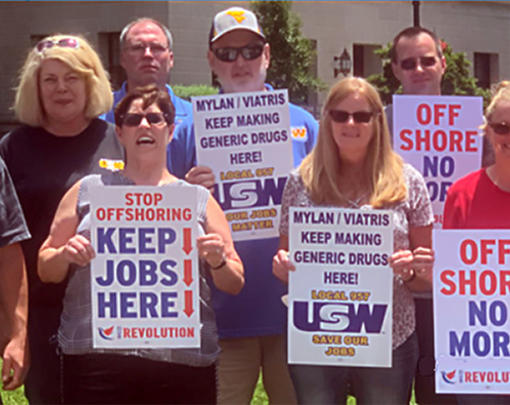We spoke with Riane Eisler—author, visionary economist, and President of the Center for Partnership Studies—about her path to discovering the need and ideal methods for establishing what she dubs “Whole Systems Change.” Eisler delves into the origins of her theories and then expounds upon them, providing a detailed glimpse into the societal structures through which she categorizes the current global political-economic and cultural arenas. Read on to explore the nuanced problems she unpacks and her posed solutions, and also be sure to check out her contributed paper to the first volume of our New Systems: Possibilities and Proposals series.
Cecilia Gingerich, The Next System Project (CG): When did you first realize that systemic change was necessary?
Riane Eisler (RE): I realized that systemic change is necessary when two turning points in my life converged.
The first was very early in my life, as a child refugee. My parents and I had to flee my native Vienna, and of course leaving all that was familiar was traumatic. We managed to get a visa to Cuba, and I grew up in the industrial slums of Havana. Being a child in an alien place where the smells and sights of poverty were all around me and men accosted women, and even little girls, as was their “macho” tradition, was not easy. Still, I knew I was lucky; most of my extended family was murdered by the Nazis.
These experiences led me to questions I later tried to answer through my research: Does there have to be so much cruelty and violence, so much injustice and suffering? Is it inevitable, as we are often told, just “human nature”? Or are there alternatives?
It was not until much later that I started my research on systems change. That was after we had moved to the United States, after years of university education, law school, a job at the Systems Development Corporation (where I was introduced to the then brand new field of systems studies), marriage, children, and then divorce and life as a single mother. It was then that I experienced what I later realized was a second major turning point in my life: my sudden awakening, as if from a long sleep, to realize that, as much as having been born Jewish had radically affected (indeed, almost cost me) my life, having been born female had also powerfully affected not only how I saw myself but also how others saw me, and hence the whole course of my life. It was at that point that I became involved in the women’s movement, and used my legal training to found the first center in the United States on women and the law dedicated to changing discriminatory laws based on gender. I wrote a brief to the US Supreme Court making the then radical argument that women should be considered persons under the Equal Protection Clause of the Fourteenth Amendment and authored the only mass paperback book, The Equal Rights Handbook, to counter the falsehoods leveled again the proposed Equal Rights Amendment.

When that simple amendment, which would just have made discrimination based on sex by state or federal government laws and regulations unconstitutional, was defeated, it became clear to me that what was actually needed was systemic change. So I returned to the questions of my childhood, and began my research on cultural transformation.
CG: In your work you describe moving to a “partnership system.” Can you briefly describe what a partnership system is?
RE: The method I used in my research, the study of relational dynamics, differs from other approaches in a number of critical respects. It draws from a much larger database than most studies of society: it includes the whole of humanity (both its male and female halves), the whole of our history (including prehistory), and the whole of our lives (not only the public spheres of politics and economics, but also the private spheres of family and other intimate relations). It focuses on two systems dynamics; First: What is the relationship between key elements of a social system in maintaining or altering the system’s basic character? And second: What kinds of relationships – from intimate to international - does a social system support: top down ranking or relations based on mutuality?
This methodology revealed two underlying social patterns or configurations: the partnership model and the domination model. These new social categories transcend conventional ones such as right vs. left, religious vs. secular, ancient vs. modern, capitalist vs. socialist, and so on – which focus only on particular aspects of a system and pay scant, if any, attention to the cultural construction of the primary human relations between the female and male halves of humanity and between them and their daughters and sons. The partnership model and the domination model have two very different core configurations.
- In contrast to domination systems, where there is top-down authoritarian rule in both the family and state or tribe, partnership systems have democracy and equality in both the family and state or tribe.
- Unlike domination systems, where the male half of humanity is ranked over the female half, in partnership systems there is gender equity, and with this, a greater valuing of “feminine” traits and activities such as caring, caregiving, and nonviolence – in both women and men as well as in social and economic policy.
- Whereas domination systems are ultimately held together by fear, force, and the threat of pain, partnership systems are based on mutuality; there are hierarchies, but rather than hierarchies of domination, these are hierarchies of actualization where power is empowering rather than disempowering and accountability, respect, and benefits flow both ways, rather than just from the bottom up.
These configurations or models are the two ends of a partnership-domination continuum, as no society is a pure partnership or domination model. But the degree of orientation to either end of this continuum makes for very different social systems. For example, Nazi Germany (secular, Western) and Khomeini’s Iran and ISIL (religious, Eastern) orient closely to the domination model. The Minangkabau (religious, Eastern) and Nordic nations (secular, Western) orient to the partnership model.
CG: You described the Nordic nations, which include Sweden, Finland, and Norway, as orientating “more closely to a partnership system.” Can you describe what specific policies, institutions, or cultural practices these countries have implemented that helped them to achieve this orientation?
RE: A major factor in these countries’ partnership orientation is the higher status of women (for example, women are 40-50% of national legislatures). With this has come a higher valuing of the “feminine.” So not only women but also men have voted for more “soft” or “caring” policies, such as universal health care, high quality child care, and generous state-supported paid parental leave. Before these policies were instituted, these nations were so poor that there were famines. While they are not ideal societies, today they have low poverty rates, high educational achievement rates, and a generally good standard of living for all. They are not socialist; they have successful market economies. They are what they often call themselves: “caring societies.”
Gender equity is a key component of the partnership configuration. Another is leaving traditions of violence behind. These nations passed the first legislation against physical discipline of children in families (an important partnership trend). They introduced peace studies, and have a strong men’s movement to disentangle “masculinity” from its equation with domination and violence. They are also in the forefront of policies to care for our natural environment, have a high proportion of cooperative enterprises, and invest proportionately more in aid to poor nations than other rich countries.
CG: While even a partnership orientation to the degree of the Nordic nations would take some time for the United States, what is the next step after that? How can these industrial (or post-industrial) countries improve to align even more closely with a partnership system?
RE: In my book The Power of Partnership, I outline an integrated partnership political agenda that pays particular attention to matters that are ignored or at best marginalized in current political agendas. This agenda derives from research on the requirements for fundamental social and cultural transformation.
Again, this agenda is not about left versus right, religious versus nonreligious, or liberal versus conservative, but about partnership versus domination. It focuses attention on the interconnection between how a society constructs gender and parent-child relations and how it constructs its political, economic, educational, and religious institutions. It recognizes that it is in family and other intimate relations that children either learn respect for others’ human rights or the acceptance of abuse and violence. It also recognizes the connection between rigid male domination in the family and despotism in the state or tribe, as we starkly see in authoritarian, chronically violent Middle Eastern cultures where terrorism against defenseless civilians is seen as legitimate and honorable.
In short, real systems change requires leaving behind traditions of domination and violence in our primary gender and parent-child relations: the foundations on which domination systems keep rebuilding themselves.
CG: Can you spend a bit more time describing how a partnership system would address current environmental issues, and particularly climate change?
RE: Both capitalist and socialist theory fail to recognize the value of caring for nature. The applications of socialism in both the former Soviet Union and China have been characterized by environmental disasters. In other words, it is not just unregulated capitalism that has been bad for our natural environment.
By contrast, caring for people and for nature is highly valued in partnership systems, and these values would inform policies. For example, high taxes would be levied on activities that create carbon emissions and there would be tax credits for companies that protect our natural life support system, such as manufacturing that recycles. Keeping a clean and healthy environment in both our homes and our planet would be highly valued. So would caring for people, which would be honored as both men’s and women’s work. The pejorative “nanny state” would be recognized as sexist and absurd.
CG: How quickly could large domination-oriented societies like the United States and China transition to a partnership-oriented society? Could the change occur quickly enough to address some of the major “tipping points” for climate change, which climate scientists expect to occur in the next several decades?
RE: To achieve this, we have to recognize that the devaluation of caring for people and for nature is deeply rooted in the system of gendered valuations we have inherited. Unless we make this visible we will not see fundamental change. This is why an important part of the partnership political agenda is to bring partnership education into schools and universities. Many people recognize that old thinking cannot help us solve the problems it created. Young people are especially hungry for a new paradigm, a new way of looking at the world and living in it. If they are to be effective agents of change, starting now, they need to recognize beliefs, myths, and stories that promote domination or partnership, and learn the terrible consequences of domination and the benefits of partnership.
CG: Are there any specific economic elements that are necessary for a partnership system in a post-industrial country? (markets, money, etc.)
RE: Systemic change requires both cultural and institutional or structural change, especially in economics. To achieve this, we need a new economic map. The old economic map fails to recognize the contributions of the three unpaid economic sectors: the household economy, the community volunteer economy, and the natural economy. My book The Real Wealth of Nations introduces a new economic map that – along with the market, government, and illegal economies – includes these essential economic sectors. This integrative map is the foundation for a partnership economic system that recognizes that the real wealth of a nation consists of the contributions of people and nature.
CG: Can you explain to us the importance of economic indicators, and specifically the Social Wealth Economic Indicators (SWEIs) that you have developed at the Center for Partnership Studies?
RE: The main economic indicator policy makers rely on today is GDP or Gross Domestic Product. It is a strange indicator. It includes activities that harm and take life. Selling cigarettes and the medical and funeral costs of smoking boost GDP; so do oil spills, since cleanup, litigation, and their other costs augment GDP. But GDP fails to include activities essential to support life, such as the work in households of caring for people, starting in early childhood, even though without it there would be no workforce. GDP also gives no value to caring for our natural life-support systems, without which we could not survive.

Social Wealth Economic Indicators (SWEIs) are unique tools for both progressive policy makers and advocates for a more equitable and environmentally sustainable society. They differ not only from GDP but also from most other GDP alternatives by demonstrating the enormous economic value of caring for people and nature. For example, a recent Australian study showed that if the work of caring for people in households were included in GDP, it would add 50% to it. SWEIs also pay much more attention to gender than other GDP alternatives. For instance, they reveal the link between the disproportionate poverty of women and the lack of policies that support the care work still primarily performed by them. Also unlike other GDP alternatives, SWEIs not only measure outputs (where a nation stands in its quality of life); it pays equal attention to inputs: what kinds of investments lead to better outcomes. SWEIs show that the United States lags way behind other developed nations in its public support for early childhood care and education. This is a major factor in our high poverty rates. It also means that we are not adequately investing in creating the “high quality human capital” economists tell us is essential for success in our post-industrial, knowledge/service age.
CG: How might a partnership system in a post-industrial country deal with currently unpaid work, including unpaid care work?
RE: There are policies already in place in other developed nations – from publicly funded paid parental leave to stipends to help families with children and refundable tax credits for caregivers of the elderly. Our county has to catch up! So also do poorer nations, which is why we are seeking funding to adapt SWEIs into a global Index: one number per nation, like GDP.
The combination of overpopulation (due to denying women reproductive freedom) and resources depletion makes a shift from the present market consumer-driven economics essential. This shift is also essential because we are entering an era of structural unemployment and underemployment due to a massive technological shift. A guaranteed annual income or negative income tax where people are given monetary stipends is one response to the replacement of human workers by automation and robotics – trends that will exponentially increase with the advent of artificial intelligence. The response I propose in The Real Wealth of Nations is linking this monetary support to the work that only humans can perform: caring, caregiving, creating. People need meaningful work to be fulfilled, and just handing out money does not encourage positive contributions.
CG: With the prominence (and power) of people like Donald Trump and Charles and David Koch it would appear that the United States may be becoming even more of a domination system. What hope do you see for the U.S. turning towards a partnership system?
RE: In the United States, Trump and the Kochs are part of the regression to the domination system. The growing gap between haves and have-nots that was the norm just a few centuries ago is part of this regression. So is the global rise of religious fundamentalism, with its push to top-down theocratic rule, holy wars, and a “traditional” male-dominated, highly punitive family. But that is not the whole story. There is also continuing movement toward the partnership system.
In the wake of the massive dislocations brought by the industrial revolution, especially in the West, has come one challenge after another to traditions of domination – be it of the right of kings to rule their “subjects, of men to rule the women and children in the “castles” of their homes, or of a “superior” race to rule “inferior” ones – all not long ago viewed as divinely ordained. The peace movement and, more recently, the movement to end traditions of violence against women and children challenged the use of force to maintain rankings of domination. The movement for economic equity challenged top-down economic control. The environmental movement challenged man’s conquest of nature.
But this forward movement was not only fiercely resisted; it has also been punctuated by periodic regressions to a more rigid domination system.
A major reason for these regressions is that most of the challenges to domination have focused only on the public sphere of politics and economics, leaving the foundations on which domination systems rebuild themselves in place. In recent times, the women’s rights and children’s rights movements have gained momentum worldwide, trying to dislodge these foundations. This is a major step forward, as we know from neuroscience that what children experience and observe in their early years affects nothing less than how our brains develop. This is why an integrated partnership political and economic agenda is so essential. As more people leave behind “traditional” male-dominated, highly punitive families, they learn that relations of domination and submission are not inevitable.
Now we are in the throes of the massive dislocations brought by the rapid shift into the post-industrial knowledge/service age. We have the opportunity to change our beliefs and institutions in a partnership direction. If we join together in an integrated partnership political and economic agenda, we can bring about systemic change in several decades.






